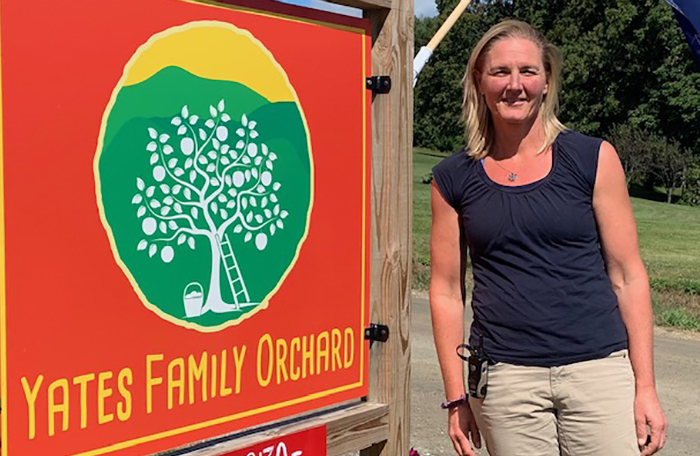As individuals, we are shaped by the world around us. The stimulation of events, news, and shared values create an ethic that informs how and why engage with ideas and certain actions. Through these shared experiences and references we form a collective identity and mode of engaging with the world around us. You may have heard people referred to as Baby Boomers, Millennials or Gen-Ys; these titles refer to identities that span a certain age group and inform how people engage with the world based on their experiences during that timeframe.
Generational differences impact our daily interactions, most notably, in the workplace. Comfort level with technology, preferred communication methods, frugality, timeliness, trust in institutions, and willingness to ask a question or state an opinion – these are all examples of values that may differ across generations and can cause workplace tensions, if not properly addressed.
Indeed, building positive relationships in the workplace depends on communicating effectively across different personality types and cultures, which is the essence of generational differences. Whether you’re explaining the value of a new database to the life-long employee or clarifying a “casual professional” dress code to a new hire, what you do or don’t say matters.
Most workplace conflicts are rooted in assumptions about a person’s intentions or motivations. These differences in opinion can stem from a seemingly innocent expression of values, like “he comes in late every day,” and may turn into an outright battle-cry, like, “she’s trying to get me fired!” Both of these scenarios reveal the impact of different values and assumed behavior at work. By following these tips for effective communication and collaborative work, you’ll be better able to avoid workplace conflict all-together and build positive working relationships instead.
Be Timely. Address tension in the workplace before it becomes a bigger issue. Honest mistakes easily turn into personal vendettas if you don’t make the conscious decision to understand what happened and discuss how to avoid it in the future. A brief conversation to probe the issue for context can do a lot to prevent future challenges.
Communicate Clearly. Most misunderstandings happen when we assume that someone understands what we mean and why it is important to us. When assigning a project or working collaboratively, be explicit in delegating roles. Communicate follow up actions, target dates, and the way that the information will be distributed. Most important, be sure to explain how the project fits into your overall goals and why it’s your priority. Having a shared understanding of values will help you establish similar footing and build significance through your shared interests.
Be Kind. Reinforce the value of each employee and recognize that everyone has different strengths in processing information. Ask individuals on the team how they would like to receive feedback (in person, telephone, text, sticky-note, email, public message board, etc.) and share with them when you feel they have done well. Remember that your style of communication or area of strength may challenge others’ attention or interests. Being open to their preferences will help you build rapport and serve your work overall.
Acknowledge the Situation. While you may think it is obvious, using the phrase, “I’m frustrated because…” will help you to get onto the same page about your expectations and possible assumptions. When information is inferred you ignore a meaningful opportunity to share information and may be more vulnerable to inter-personal conflict because of your different expectations. Be open and get to the root of the situation.
Avoid Blame. Recognize that responsibility lies on both the communicating and the receiving end. Odds are, if you are having trouble with a person at work, you are both frustrated with the situation. Rather than taking it out on each other, look to actions you can both take in the future to avoid misunderstanding each other and be explicit about your goals.
Recognize Strengths. If you’re in the position to delegate, assign projects that fit with your employees’ area of strength and set clear goals around skills you’d like them to develop. While one staff person may be comfortable managing a database of important information, another may feel their strengths are best used engaging with people directly. Look to the cues that people unconsciously share and establish roles that play to these strengths.
Be Explicit and Flexible. If you expect a job to be done in a certain way, lay the groundwork by communicating your expectations (in whatever format works for you and the recipient). If you need them to get a report on your desk by 5 p.m., be sure to note if you want it printed or emailed to you as a PDF file. If you are careful to explain the value of the project to your overall goals, your team will be better able to prioritize the work and make progress toward your goal. These small communications help employees to be sure they are achieving – or exceeding – your expectations.
Grouping generations into identity groups is about understanding the impacts of shared experiences. Of course, popular demography doesn’t apply to all people as individuals, but it helps to inform personas and to best judge the appropriate way to understand different expectations in the workplace.
By following these best practices and mindfully communicating your goals and action plans, your employees will be better able to see value in their own work and understand how their efforts impact the overall success of departmental goals and objectives.
Carin Hoffman attended the UVM Staff Development event EDU@UVM and enjoyed the Surviving Generational Differences workshop with Jill Jemison.




